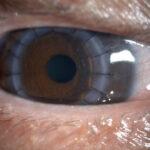Transepithelial PhotoRefractive Keratectomy (TransPRK) is the latest technique of laser refractive surgery. TransPRK may be known to some as No Touch LASIK, No Touch Laser Epi-LASIK, SmartSurface PRK or Transepithelial Surface Ablation (TESA). Like any medical procedure, you will have to undergo a series of tests and scans to determine if you are suitable for TransPRK laser refractive surgery.
Here are a few things you may expect during your initial consultation at OasisEye Specialists.
1. You will need to stop wearing contact lenses for a short period prior to the eye examination
It is important to remove contact lenses for a certain period before your initial consultation. Contact lenses will mould our cornea and change the corneal curvature, which might lead to a change in your eye power and cornea measurements. In order to calculate your actual refractive error (eye power) for the TransPRK treatment, you will have to stop wearing contact lenses for a specific period. This step is crucial for the cornea to return to its natural shape and curvature to avoid inaccurate measurements. Before the eye examination or the procedure, it is recommended to stop wearing soft contact lenses for at least 5 days, and at least 10 days for rigid gas permeable (RGP) or Orthokeratology (Ortho-K) lenses.
2. TransPRK suitability eye examination
The first eye examination will take about 2 hours to complete, as you will go through a comprehensive eye examination and counselling with an optometrist and eye surgeon. The eye examination results will help surgeons determine if you are a suitable candidate for refractive surgery. The pre-operative assessment consists of diagnostic analysis of your cornea, measurement of your refractive error (eye power), dry eyes evaluation and ocular health evaluation. First, an optometrist will take your corneal measurements with a corneal topographer. Then the optometrist will check your vision and perform eye power measurements (refraction). The optometrist will test your eyes with different lenses and determine the power needed to correct your vision. The optometrist will discuss your refractive surgery options available based on the measurements taken. Lastly, a surgeon will examine your cornea, retina and optic nerve to ensure your eyes are healthy. The surgeon will discuss the surgery procedure, risks and benefits of the surgery with you if you are suitable for TransPRK. Do not hesitate to ask any questions before deciding to go through the surgery. You will given the opportunity to raise any concerns during the discussion.
3. Dilation of pupils may be performed
Dilation of pupils may be performed during the initial consultation. The dilation drops relax your focusing eye muscles for the optometrist to measure your final eye prescription and aid the surgeon to evaluate your retina. After the dilation, your eyes may be sensitive to light and your vision will be blurry, particularly at near distance for a few hours. Thus, do bring a pair of sunglasses for your comfort. It is also advisable not to drive on that day.
4. Bring a pair of sunglasses on your procedure day
After your surgery, your eyes may be tearing and sensitive to light. Wearing a pair of sunglasses will help with the glare and protect your eyes from dust and foreign particles. You are encouraged to cultivate a habit of wearing sunglasses when outdoors for the next few months after your treatment. Get a pair of good sunglasses with UV400 protection to protect your eyes from harmful UV rays. Polarized sunglasses help reduce glare and reflection off surfaces. Larger and wraparound sunglasses help protect our eyes from foreign particles.






